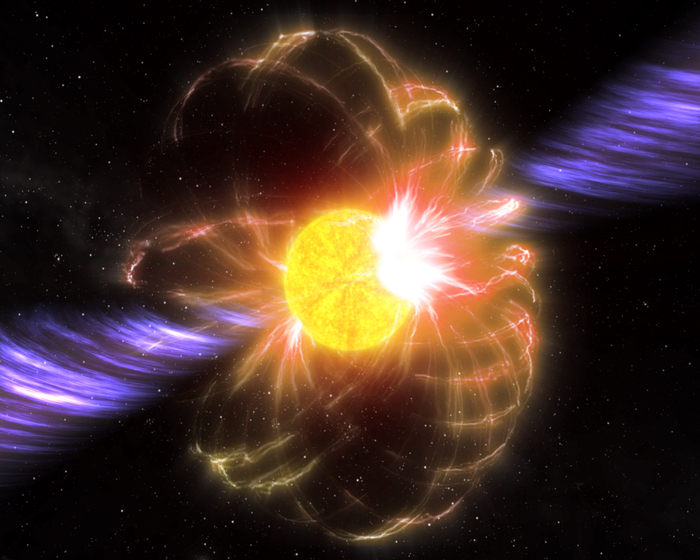Intriguing: A bright object in space emits radio signals every 18 minutes
A study published this week in Nature investigates an occurrence of a mysterious object in space that emits powerful radio signals in cycles of once every 18 minutes.
Is it a neutron star, a dead white dwarf or something else entirely?
Niv Lillian
27/01/2022
Thursday, 27 January 2022, 12:00 Updated: 12:04
Share on Facebook
Share on WhatsApp
Share on Twitter
Share on Email
Share on general
Comments
Comments
The location of the mysterious radio signal (marked with a star) (Photo: Natasha Hurley-Walker / ICRAR / Curtin / GLEAM)
The Web Space Telescope reached its destination this week, about a million and a half miles from Earth, but observation is not the only means by which astronomers study the universe: alongside observational contracts, there is also mapping and observation using radio waves.
The radio telescopes have encountered a celestial object that is unlike anything discovered so far.
The object, first discovered in March 2018, emits tremendous pulses of energy in the form of radio signals, three times an hour.
In these moments it becomes the brightest object in a radio scan from our point of view here on Earth.
A new study about him was published this week in Nature.
Scientists estimate that it may be the remnants of a collapsed star, perhaps a compressed neutron star or a dead white dwarf with a strong magnetic field - or it may be a completely different third possibility.
More on Walla!
Who knew you could get so much from one make-up?
In collaboration with Bobby Brown
Maybe in the remnants of a collapsed star.
The Milky Way (Photo: ShutterStock)
"The bone appeared and disappeared intermittently during several hours of observations," says astrophysicist Natasha Harley-Walker at the Australian University of Keratin at the International Center for Radio Astronomy, which led the study.
"It was very unexpected, even a little scary for astronomers, because there is nothing we know in the sky that behaves like that. And that object is pretty close to us: only 4,000 light-years. It's right in our backyard, in galactic terms," says Harley-Walker.
The newly discovered new object "lit itself up" for about a minute, every 18 minutes.
Researchers say it may fit the definition of a magnet with a particularly long cycle.
Magnets usually send signals that are measured in seconds, but this object, as mentioned, transmits in much longer cycles.
"It's a kind of neutron star that rotates slowly, which was theoretically possible," Harley-Walker adds, "but no one expected to find one like that on observation, because we did not expect them to be so bright. Somehow it converts magnetic energy into radio signals more efficiently. From everything we saw. "
The researchers will continue the observations in an attempt to understand whether this is a solitary and rare event, or whether there are other objects like it in the vast expanses of space.
technology
Tags
Star
galaxy












